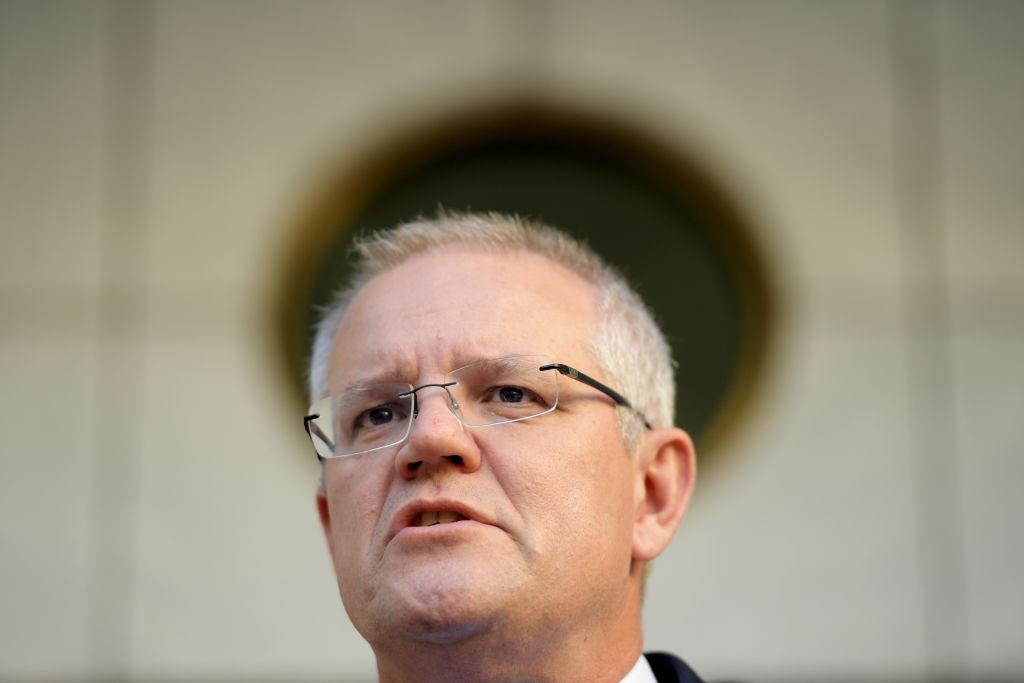What Vietnam is looking for from Scott Morrison’s visit
Posted By Huong Le Thu on August 21, 2019 @ 14:14

In March last year, Australia and Vietnam upgraded their diplomatic relations to a strategic partnership, stressing among other things the importance of a region ‘shaped by rules and norms’ and annual meetings between their defence ministers. The agreement is a shared vision for a regional security outlook that trumps the differences in political systems. In one of his first official trips as the re-elected prime minister of Australia, Scott Morrison is set to arrive in Hanoi on Thursday amid tensions roiling in the South China Sea.
There are many highlights in the relationship. Australia has been a reliable partner in providing assistance to Vietnamese UN peacekeeping forces, and it has supported infrastructure in the vulnerable Mekong region, including completion of the Cao Lanh Bridge [1]last year—Canberra’s largest single aid project in mainland Southeast Asia. Trade and economic ties are the key areas of mutual interest. Vietnam is our second-fastest-growing trade partner, and the bilateral trade volume has been consistently growing—by 12% in the past five years. But there’s more that Australian businesses can do.
Vietnam is an attractive market. It is one of seven economies, according to Standard Chartered Bank, whose GDP growth will remain at about 7% [2] through the 2020s, provided there are no major disruptions from the trade war. A youthful population will fuel significant consumption growth—Vietnam’s GDP per capita is expected to increase four-fold by 2030 [3]. Australian brands are among the most trusted in agriculture, medicine and education by a Vietnamese middle class of 33 million people, a number that continues to grow by 1.5 million [4] each year. Around 30,000 Vietnamese are currently studying in Australia and the potential is much higher. There is high demand for both English-language and digital-literacy training. The Australian and Vietnamese economies are very complementary.
But beyond flourishing opportunities, there are also mounting geostrategic challenges. Since the signing of the partnership, the strategic environment has considerably deteriorated. Back then, the concept of the ‘Indo-Pacific’ was still in its infancy and the US–China trade war had not fully begun.
As Hanoi welcomes Morrison, Vietnam faces Chinese coercion [5] as maritime militia and coastguard forces escort Chinese petroleum survey ships into Vietnam’s exclusive economic zone. Outside the US, international reaction to continuing incidents at sea has been relatively muted. Australia is yet to explicitly condemn Beijing’s action. Canberra signed the recent collective statements from AUSMIN [6] and the US–Australia–Japan strategic dialogue [7] that alluded to the event as ‘disruptive activities’ related to oil and gas projects and fisheries in the South China Sea.
The Morrison government took office at a time when Australia’s relations with China were becoming increasingly difficult to manage, on multiple fronts. When the prime minister sits down in talks with Vietnam’s leaders in Hanoi this week, he can expect to face questions on the consistency of Australia’s South China Sea policy. Ideally, the Vietnamese would like more diplomatic and practical support from Canberra, backed up by Australian oil and gas exploration companies commercially partnering with Vietnamese ones in the disputed waters. Just how strategic is the strategic partnership between the two if they can’t count on each other in the key security agenda?
Vietnam’s independent spirit is reflected not only in traditional issues of sovereignty, but also in how it manages the impact of new technology. Vietnam has 5G network ambitions but shares concerns about Huawei technology. Vietnamese telecommunications companies have partnered with Ericsson and have successfully tested the network in Hanoi. If the second phase is completed, Vietnam will be among the first to have a 5G network not reliant on Huawei—something of interest to Australia given its rejection of Chinese equipment for its network.
Vietnam is now the world’s second largest exporter of smartphones, and the current tariff restrictions on China’s electronic components have boosted its numbers. South Korea’s Samsung and LG have also shifted manufacturing of semiconductors to Vietnam. The Vietnamese government, under Prime Minister Nguyen Xuan Phuc—who signed the strategic partnership with Australia last year—has made seizing the opportunities of the fourth industrial revolution a priority for the country.
For Canberra, Vietnam’s importance goes beyond just its bilateral relations with China; it is increasingly a key diplomatic and strategic actor in the region. As Vietnam prepared to take up the ASEAN chairmanship in 2020 (along with sitting on the UN Security Council as a non-permanent member), how Hanoi regards the Indo-Pacific concept will be important for the future of the idea. Noting that Vietnam will be the first ASEAN chair following the release of the organisation’s ‘outlook on the Indo-Pacific’, this is an opportunity for Morrison to communicate Australia’s own guiding principles in the fast-changing Indo-Pacific region.
Article printed from The Strategist: https://aspistrategist.ru
URL to article: /what-vietnam-is-looking-for-from-scott-morrisons-visit/
URLs in this post:
[1] Cao Lanh Bridge : https://foreignminister.gov.au/speeches/Pages/2018/jb_sp_180527.aspx?w=tb1CaGpkPX%2FlS0K%2Bg9ZKEg%3D%3D
[2] remain at about 7%: https://www.bloomberg.com/news/articles/2019-05-12/asian-economies-set-to-dominate-7-growth-club-during-2020s
[3] four-fold by 2030: http://www.hanoitimes.vn/economy/2019/05/81e0d6bd/vietnam-s-gdp-per-capita-to-increase-4-fold-by-2030/
[4] 1.5 million: https://english.vietnamnet.vn/fms/business/198930/1-5-million-vietnamese-join-middle-class-each-year.html
[5] Chinese coercion: /chinas-incursion-into-vietnams-eez-and-lessons-from-the-past/
[6] AUSMIN: https://www.defense.gov/Newsroom/Releases/Release/Article/1925222/joint-statement-australia-us-ministerial-consultations-ausmin-2019/
[7] US–Australia–Japan strategic dialogue: https://www.state.gov/trilateral-strategic-dialogue-joint-ministerial-statement-august-1-2019/
Click here to print.